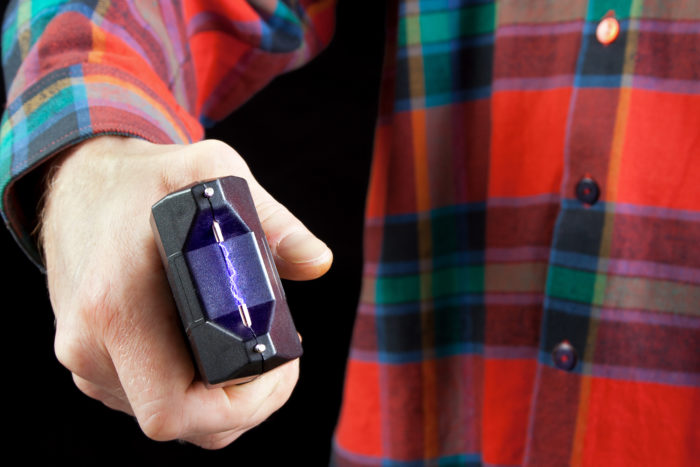 A class action lawsuit claims that some Taser models designed to be use by citizens accidentally discharge due to a defective safety mechanism.
A class action lawsuit claims that some Taser models designed to be use by citizens accidentally discharge due to a defective safety mechanism.
The Taser defect class action lawsuit aims to hold Axon Enterprise Inc., formerly Taser International Inc., accountable for the defects in citizen Taser models Pulse, X2, and X26P.
Plaintiff Douglas Richey says he purchased a C2 model from Taser in 2016, to use for personal self-defense.
He claims that roughly a year after he purchased it, the device discharged in his pocket because the safety mechanism that prevents the device from firing fell into the “armed” position, due to a defect in the device’s design.
The Taser safety defect class action alleges that after Richey purchased the device, he fired it in October 2016, but found that the device failed because the prongs ejected only one or two feet.
He says that he contacted the Taser customer service and was sent a replacement, with a warranty that the device would be “free of defects in workmanship and materials” for a year after he received it.
Richey claims that on Jan. 18, 2017, he put the Taser in his right jacket pocket. He says that on this occasion, he had the weapon switched to the “safe” position so that it would not discharge.
However, as he got out of his car, he alleges that he heard a muffled “pop” sound and smelled gunpowder. Richey claims that he looked at his pocket to find the Taser’s electric barbs sticking out of his pocket, because the device had discharged while it was in his pocket.
The Taser class action lawsuit states that it was sheer luck that Richey was not harmed from the event. He claims that he then pulled the device out of his pocket, a process that required ripping his jacket pocket.
He alleges that he discovered that the safety mechanism could be switched to “armed” very easily, by moving the lever a fraction of an inch, an occurrence that could happen by using the device normally and carrying it.
The Taser defect class action lawsuit claims that Richey contacted customer service via email about the problem, and received a response explaining that “our engineers are currently aware of the safety switch activation and are working on a solution.”
Richey says that the representative offered to send him two barb replacements, but did not offer to repair or replace the device.
The Taser class action goes on to claim that the experience Richey had was consistent with the experience of many customers who discovered the device to be defective and were not offered a repair for their device or a replacement.
Additionally, Richey alleges that the company knowingly endangers users and others by continuing to market and sell the defective Tasers.
He states that in March 2013, Canada’s Defense Research and Development reported on the same defect Richey describes, confirming that the device can accidentally be switched to an “armed” position quite easily.
Additionally, those findings allegedly reported that an accidental discharge was quite dangerous, and the shock of the Taser could cause “death or serious injury.”
Richey is represented by Lori E. Andrus and Jennie Lee Anderson of Andrus Anderson LLP and James M. Terrell and J. Matthew Stephens of Methvin Terrell PC.
The Taser Defective Safety Mechanism Class Action Lawsuit is Douglas Richey v. Axon Enterprise Inc., et al., Case 3:18-cv-03751-KAW, in the U.S. District Court for the Northern District of California, San Fransisco Division.
ATTORNEY ADVERTISING
Top Class Actions is a Proud Member of the American Bar Association
LEGAL INFORMATION IS NOT LEGAL ADVICE
Top Class Actions Legal Statement
©2008 – 2025 Top Class Actions® LLC
Various Trademarks held by their respective owners
This website is not intended for viewing or usage by European Union citizens.















One thought on Taser Class Action Says Pulse, X2 Models Accidentally Discharge
Too bad tasers done use gunpowder. They use c02 like pellet guns. Zero smell. This guy is full of it.